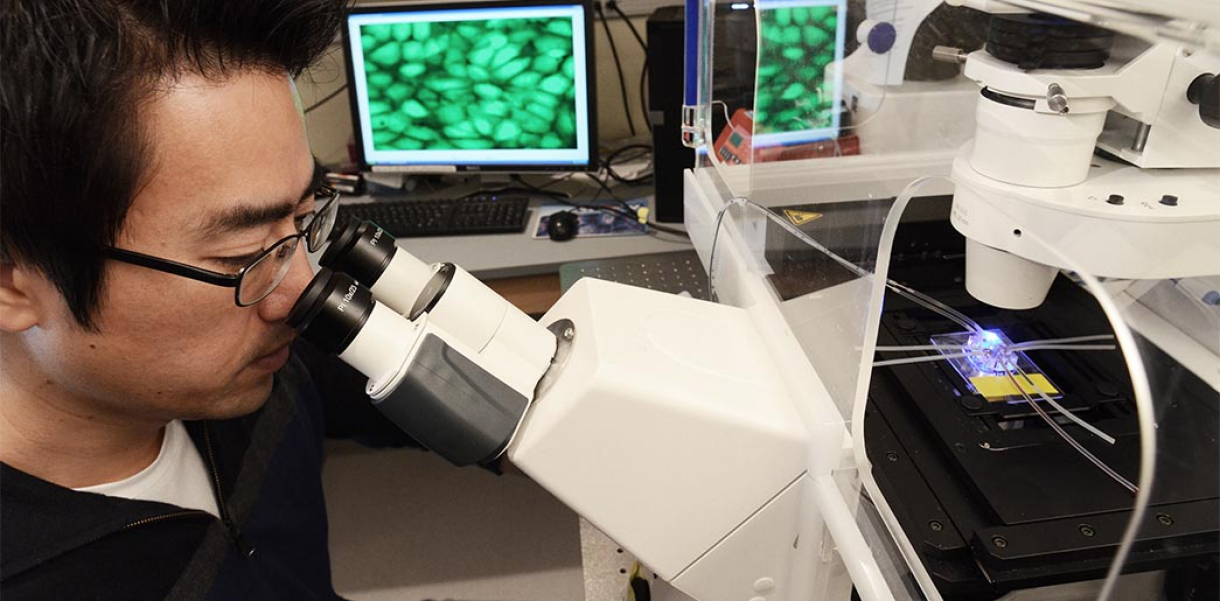Pharmaceutical companies are failing to bring new drugs to patients because they rely on the use of expensive, time-consuming and controversial animal testing to validate their compounds that often fail to predict results obtained in human clinical trials. Scientists have worked for years to create alternatives to animal testing, but with little success. At the same time, the use of nanoparticles in consumer products and production of environmental pollutants have skyrocketed, yet the risks that these manmade microscopic compounds pose to human health have been difficult to measure due to limitations in current testing models. The Lung-on-a-Chip offers an entirely new approach to deal with both of these major health threats to our society.
The Lung-on-a-Chip is crystal clear, flexible and the size of a computer memory stick and it mimics the structure and breathing functions of the living human lung. The Chip has three parallel hollow channels, the central of which is split in half by a horizontal, permeable membrane. The membrane’s top surface is lined with living cells from the air sac of the human lung, over which air flows. Its bottom surface is lined with human capillary blood vessel cells under which flows a liquid medium containing white blood cells. To mimic breathing movements, repeated suction is applied to adjacent side channels which stretch and relax the flexible membrane and cells. This simple micro device recapitulates human lung responses to infection, inflammation and environment toxins, offering a potential replacement to animal testing for drug development and environmental monitoring.
Designed by
Donald Ingber and Dan Dongeun Huh - United States of America




